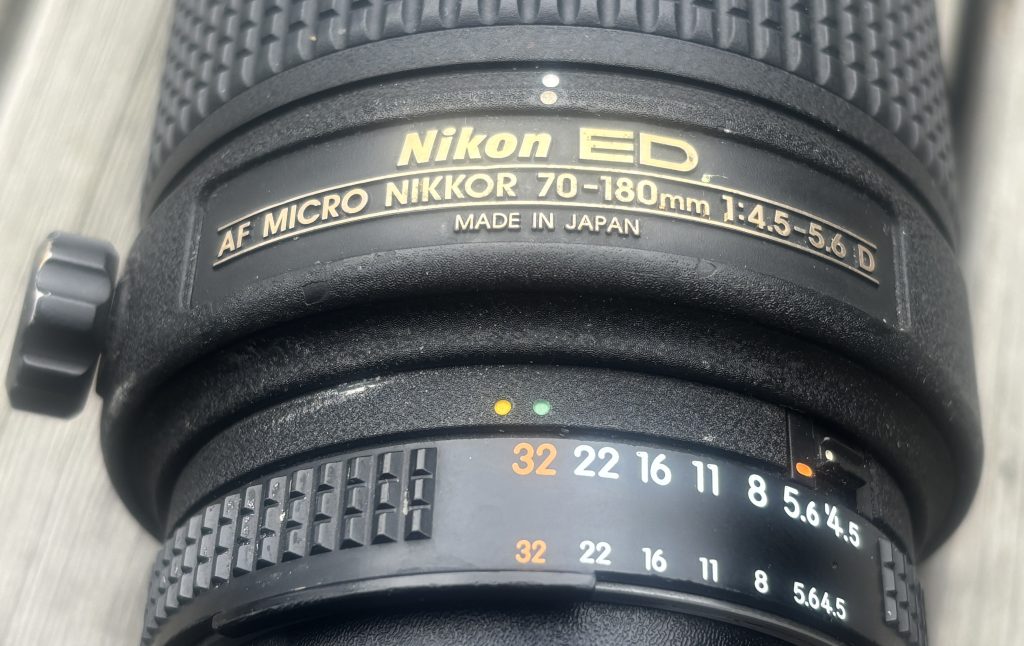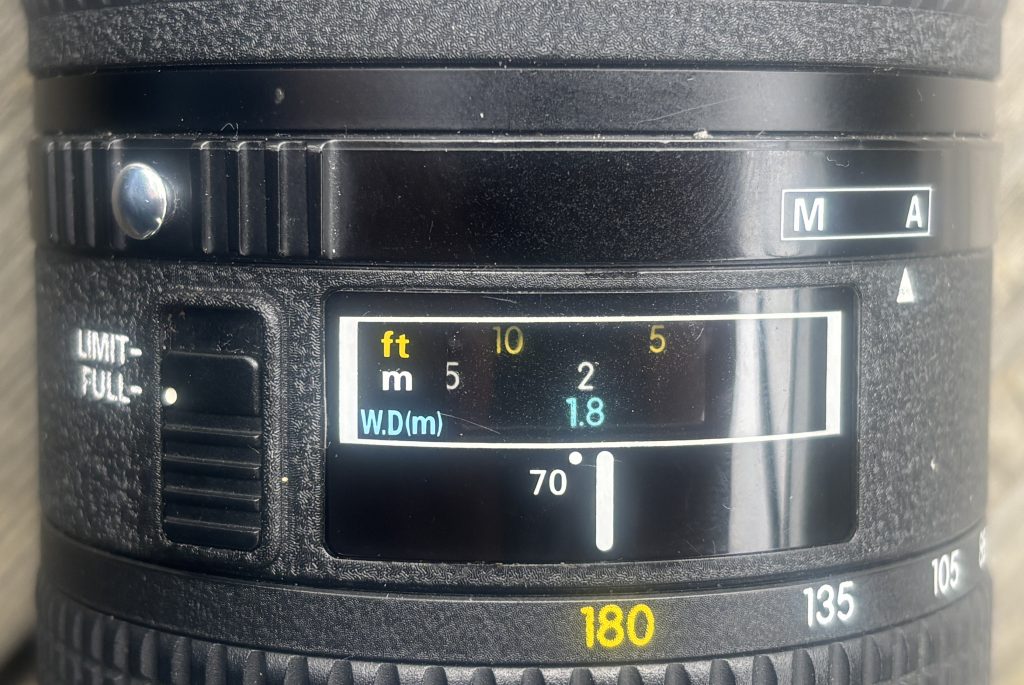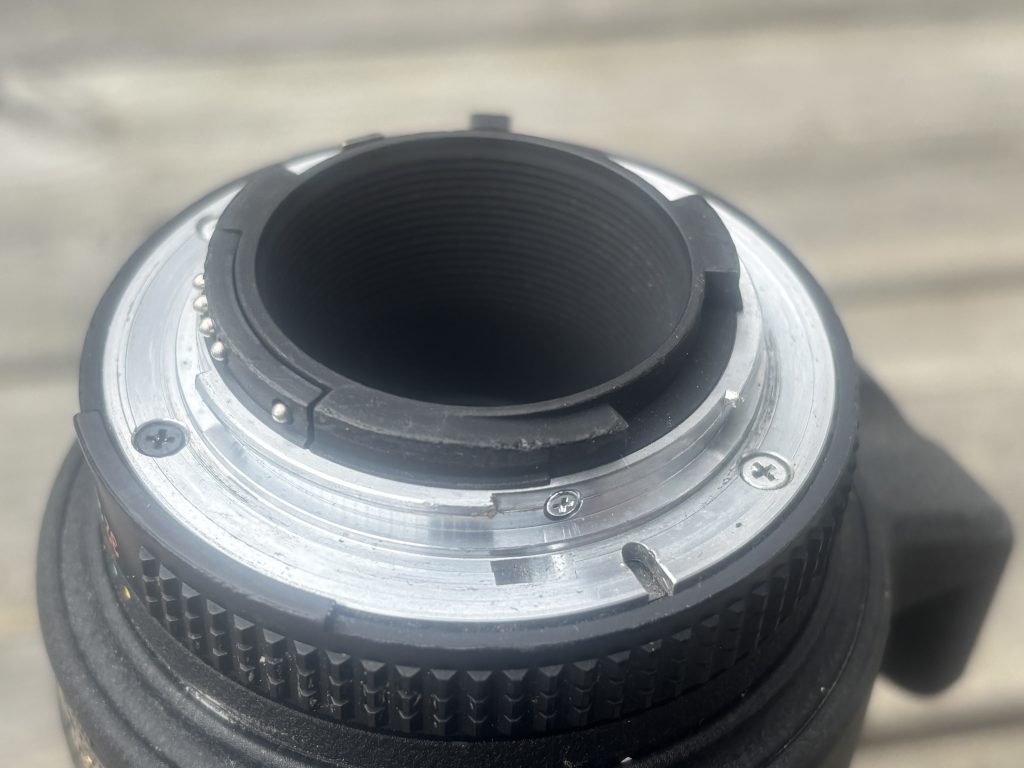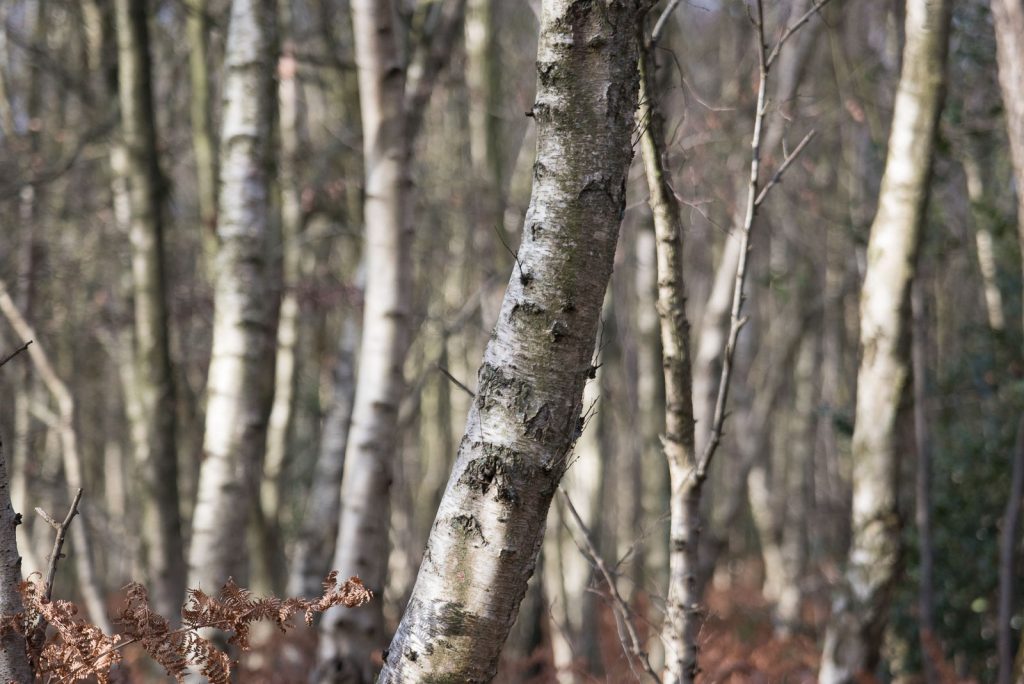
Technical Buyer’s Guide
The Nikon 70–180mm Micro is one of the most unusual lenses Nikon ever produced. Released in the late 1990s, it remains the only zoom lens Nikon designed specifically for macro work. Its combination of flexible framing, close-focus capability, and classic F-mount ergonomics makes it a cult favourite among macro specialists and collectors.
Below is a practical, and technical guide to help you decide whether this lens is right for you — and what to look for when buying one today.

1. What Makes This Lens Unique
Unlike conventional telephoto zooms, the 70–180mm Micro was engineered to maintain high optical performance at close-focus distances.
The standout features are:
True macro-centric optical design
Most zooms “can focus close,” but this lens was built to deliver macro-level magnification and edge-to-edge correction. It reaches approximately 1:1.3 reproduction, which is unusually high for any zoom.
Zoom flexibility at macro distances
At close range, small adjustments in camera position drastically change your composition. Being able to zoom instead of physically moving makes macro shooting faster, steadier, and more precise.

Very stable working distance
The lens doesn’t require you to get extremely close to your subject to get strong magnification, which is useful for shy insects, controlled studio setups, or maintaining clean lighting.

2. Optical Performance
Macro / close-up behaviour
This is where the lens shines. Sharpness in the center is excellent when stopped down slightly, contrast holds well, and chromatic aberrations are well-controlled for a zoom of this age. Performance is strongest in the mid-range (around 100–150mm).
Long-distance behaviour
At normal shooting distances, sharpness is more modest. Corners soften noticeably at the 180mm end unless stopped down. If your primary use is wildlife or sports, this isn’t the ideal lens — its optical strengths are clearly tailored to close-range imaging.
Bokeh and rendering
The lens produces smooth, clean foreground/background blur due to its long focal length and relatively simple optical formula. The aperture is not especially wide, so background separation relies more on focal length and distance than on shallow depth-of-field.

3. Autofocus & Handling
Autofocus
Being an older AF-D lens, it relies on the camera’s screw-drive motor.
Expect:
- Audible, mechanical AF noise
- Slower autofocus compared to modern AF-S or Z lenses
- Decreased AF reliability at macro distances (normal for most macro lenses)
Many users treat it as a manual-focus-first lens, especially for macro photography where precision beats speed.

Build quality & ergonomics
- Sturdy construction with classic late-film-era Nikon materials
- Large, well-damped zoom ring
- A dedicated tripod collar for stable macro work
- No weather sealing
- No internal focusing — the lens grows longer as it focuses
Despite being a zoom macro, it balances well on mid-sized DSLR bodies and adapts smoothly to Z-mount via FTZ.

4. Compatibility
On Nikon DSLRs (F-mount)
- Full autofocus available only if the camera has a built-in screw-drive motor.
(D7500 downwards users will not get AF.) - Metering and exposure modes work on all modern DSLRs.
On Nikon Z mirrorless
- Requires FTZ or FTZ II adapter
- Autofocus operates using the mechanical coupling but is noticeably slower
- IBIS (in-body stabilization) helps compensate for the lack of VR in the lens
If you’re a Z-mount macro shooter comfortable with manual focus, this lens adapts surprisingly well.

5. Ideal Use Cases
This lens suits photographers who need macro versatility, including:
- Botanical photography
- Product & tabletop work
- Jewelry, collectibles, and small objects
- Controlled studio macro
- Insect or reptile photography where extra working distance is helpful
- Film-era collectors who appreciate rare Nikon optics
It is not ideal for:
- Fast action
- Portrait work requiring fast AF
- Low-light handheld telephoto shooting
- Travel situations where weather sealing is needed

6. What to check on a used /second-hand version
Because all examples are now decades old, condition matters more than usual.
Check these critically:
1. Optical condition
- Look for internal haze, fungus, or separation
- Inspect for dust clusters (small dust is normal; large clumps affect contrast)
- Shine a light through the lens to check for fogging or residue
2. Aperture mechanism
- Aperture blades should be dry, snappy, and evenly responsive
- Any visible oil is a red flag
3. Focus & zoom rings
- Both should turn smoothly with no grinding
- Excess stiffness or looseness indicates mechanical wear
- Check for zoom creep when pointing downwards

4. Tripod collar
- Should rotate smoothly and lock firmly
- Missing collars reduce the lens’ usability and resale value
5. Autofocus coupling
- Test AF on a camera body with screw-drive capability
- Listen for grinding or misalignment
6. Exterior condition
- Look for dents near the filter thread or evidence of drops
- Confirm the front and rear caps are included
- Check if the lens hood fits securely
7. Price Expectations (Typical Used Market)
(General ranges—not pulled from any specific listing)
- Excellent condition: high end of used pricing
- Good condition: mid-range pricing
- Collector-grade: sometimes significantly above normal market value
- Poor / fungus / stiff rings: strongly discounted and generally not worth buying unless you plan to repair
This is a sought-after lens, so prices vary more widely than typical 20-year-old zooms.

8. Should You Buy It?
If you want a macro lens that gives you the flexibility of a zoom, this is essentially the only Nikon-made option — and still an extremely capable one. Its image quality at close distances rivals many primes, and the ability to fine-tune framing without moving the camera is a powerful advantage.
If you need fast AF, VR, modern coatings, or uncompromising telephoto sharpness, you should look elsewhere. But for macro shooters, product photographers, or Nikon collectors, the 70–180mm Micro remains a uniquely valuable tool.
